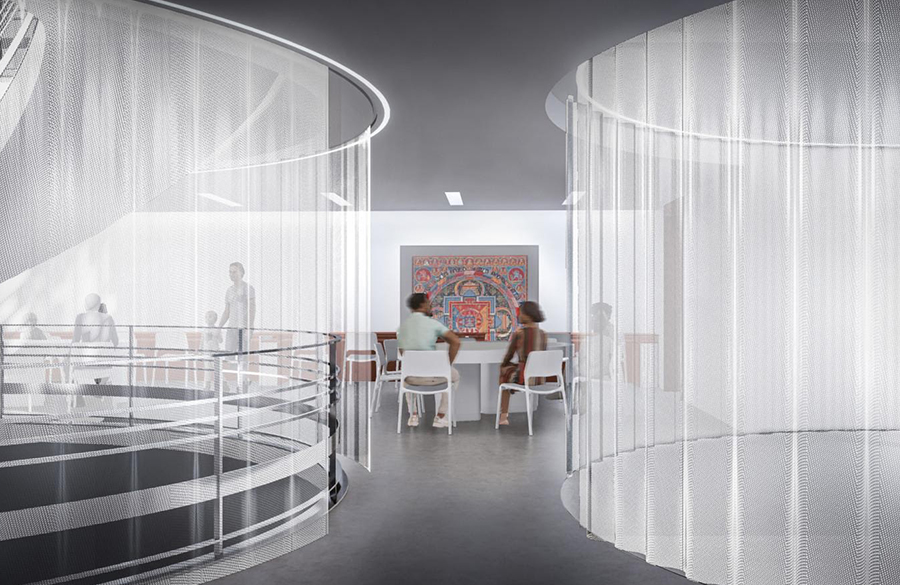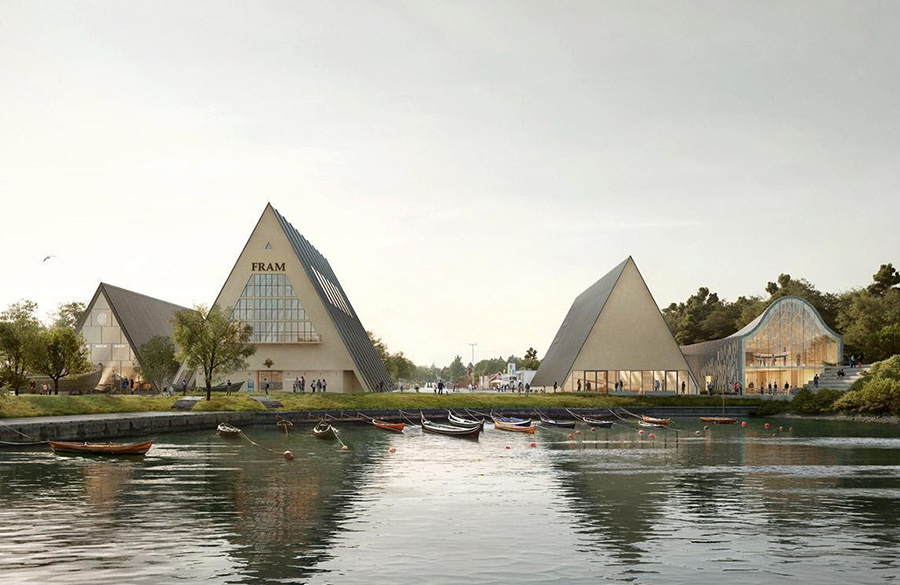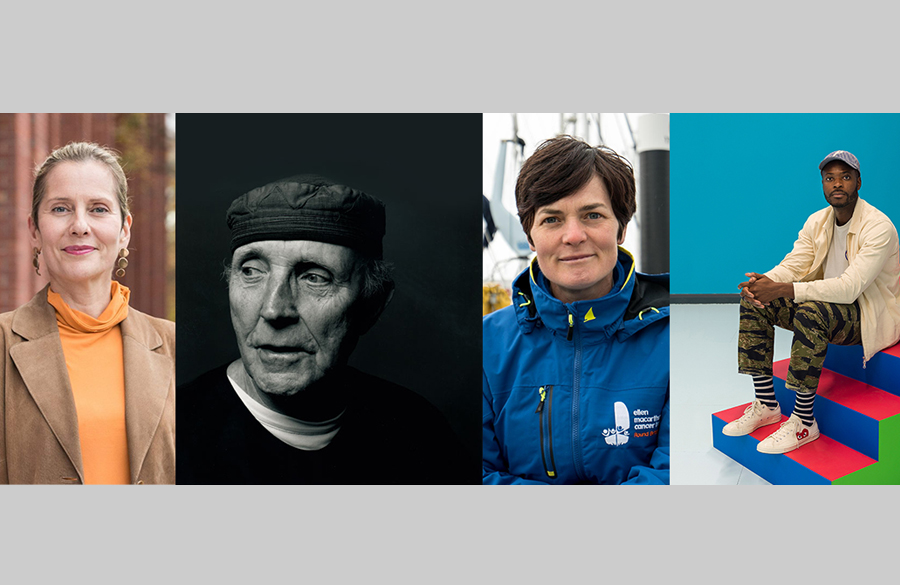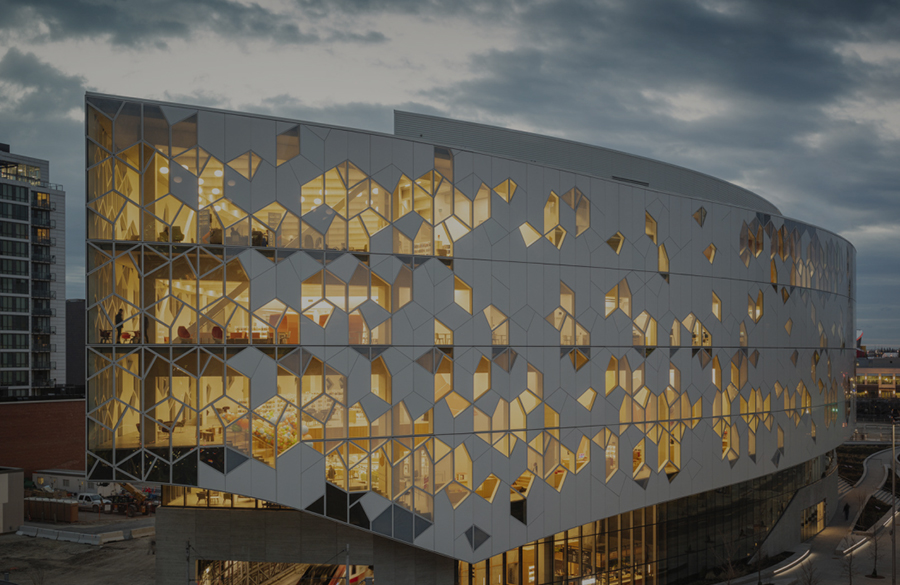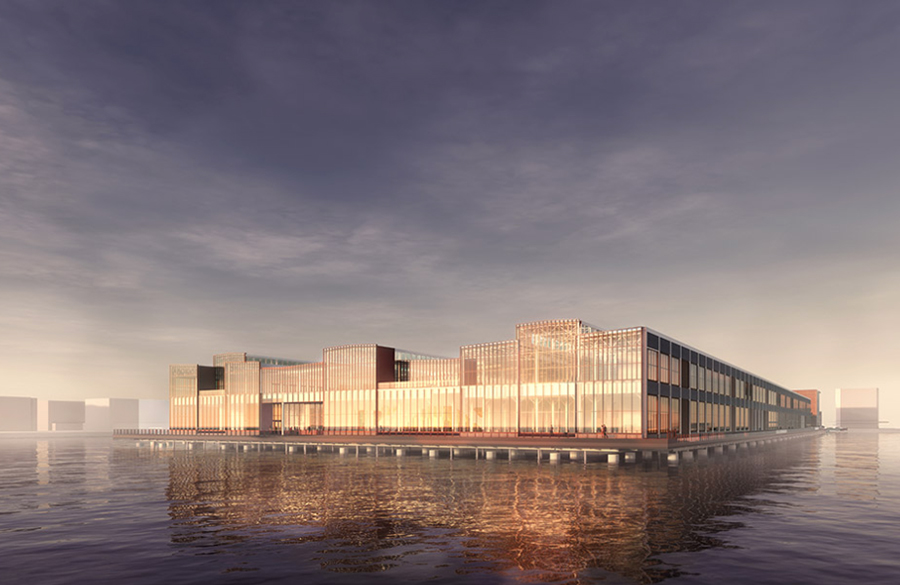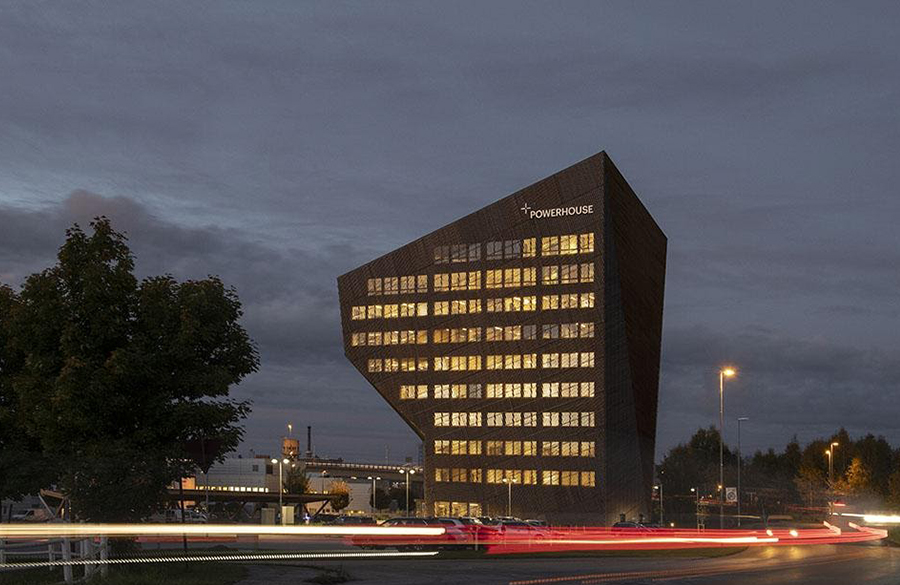The Rubin Museum of Art in the city of New York is dedicated to Himalayan art and culture with the collection, display and preservation of several artefacts from the Indian subcontinent, East Asia and regions of Eurasia, with a primary focus on Tibetan art. With its origination from the private collection of Donald and Shelley Rubin, the Museum now also hosts national and international exhibitions.
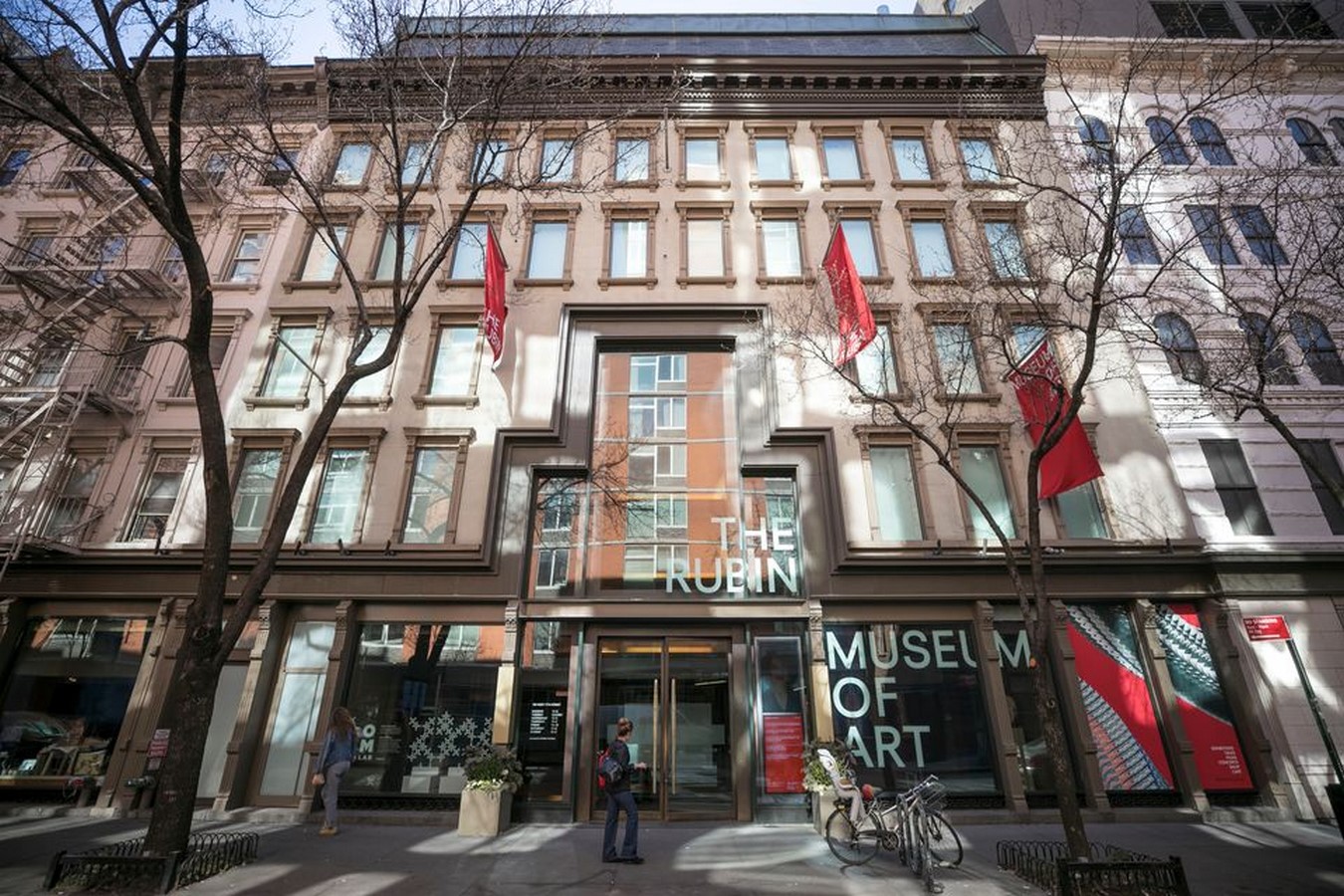
Peterson Rich Office led by Miriam Peterson and Nathan Rich is a Brooklyn-based architecture and design firm that won the competition to design the Mandala Lab on the third floor of the Rubin Museum earlier this year. This marked the first art museum project for the firm in New York City. Peterson Rich Office has recently released the design for the lab with the primary inspiration from the Tibetan Buddhist spiritual symbol of mandala representing the concept of the universe and a palace of enlightened deities.
The mandala in Tantric Buddhism serves as a visual tool for a contemplative aid in visualization practices that focus on transforming the emotions of an ordinary person into the more desirable qualities of enlightened human beings. Traditionally in Tibetan culture, a mandala can be made as a painting on cloth, a temporary artwork made with colored sand on the floor, a large three-dimensional structure, or as a ritual object. The Rubin’s Museum currently showcases over 100 depictions of mandala in its permanent exhibition.
Social and emotional teachings are the foundation of School and Family Programs at Rubin Museum to guide the younger generations with techniques to navigate the world more skillfully. The Mandala Lab aims to offer fresh perspectives for coping up with day-to-day challenges, anxieties and emotional burdens that are heightened by the Covid-19 pandemic. The Lab will provide transformational moments for people with the help of its Himalayan Art.
“Our society is struggling right now. We are navigating a pandemic, we are grappling with a climate crisis, and we are confronting long standing inequities and deep divisions in our society”. In a recent press release the museum’s executive director JorritBritschgi said, “With the Mandala Lab, our hope is to empower us to face these challenges: to widen our imagination, understand and manage our emotions, enrich our capacity for empathy, and connect with others. Our hope is for Rubin to be a Museum where art, ideas, research, and our emotions connect.”
Peterson Rich Office has opted for a multipurpose open floor space convertible with mesh partitions for the Rubin Museums – Mandala Lab to host various events, exhibitions and activities along. The interior walls have been cleverly rounded to make space feel larger with both natural and artificial sources of light.

The 2700 square feet Mandala Lab will be designed as a social and emotional learning space for all age groups to channelize their energy and help to cope with the current turbulent times of coronavirus pandemic through the means of contemplation, meditation, and other Buddhist practices. The exhibition will be dedicated to intellectual science, contemplative practice along with visitor contributed art experiences.
The conceptual inspiration for the floor plate has also been derived from the Tibetan Buddhist Mandala. The area will be divided into four sections indicating the four cardinal directions i.e., East, West, North and South as well as in reference to both the symbolic colors and elements of nature i.e., earth, fire, air and water. Each quadrant is designed to offer the museumgoers activities to contemplate the difficult emotional state within themselves and control them, like anger, pride, jealousy or desire, and help in converting these emotions into a pearl of harmonizing wisdom like equanimity and discernment based on insightful teachings by the mandalas on emotion. Contemporary artists across disciplines will be commissioned to create multidisciplinary art experiences for the lab.
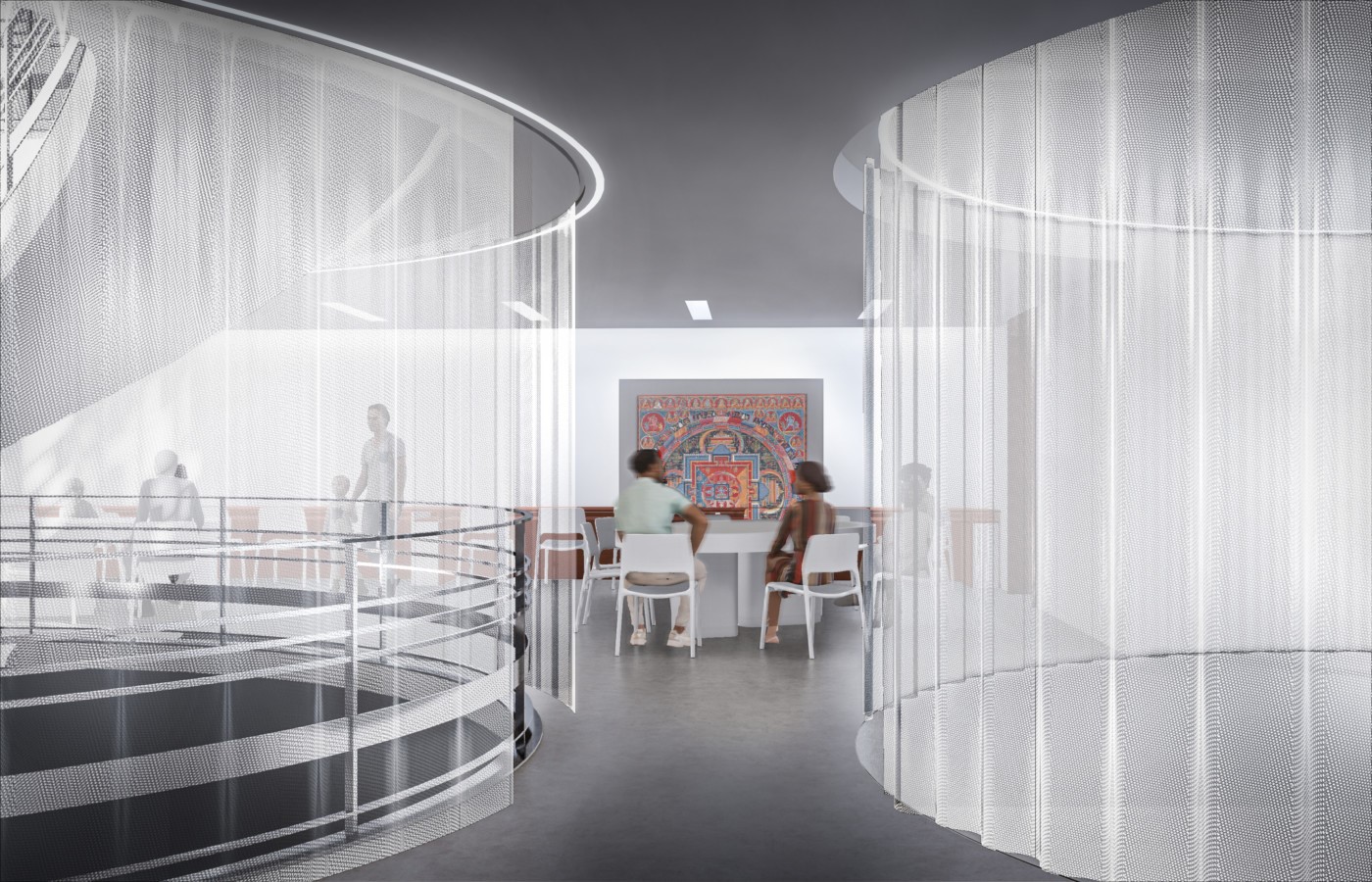
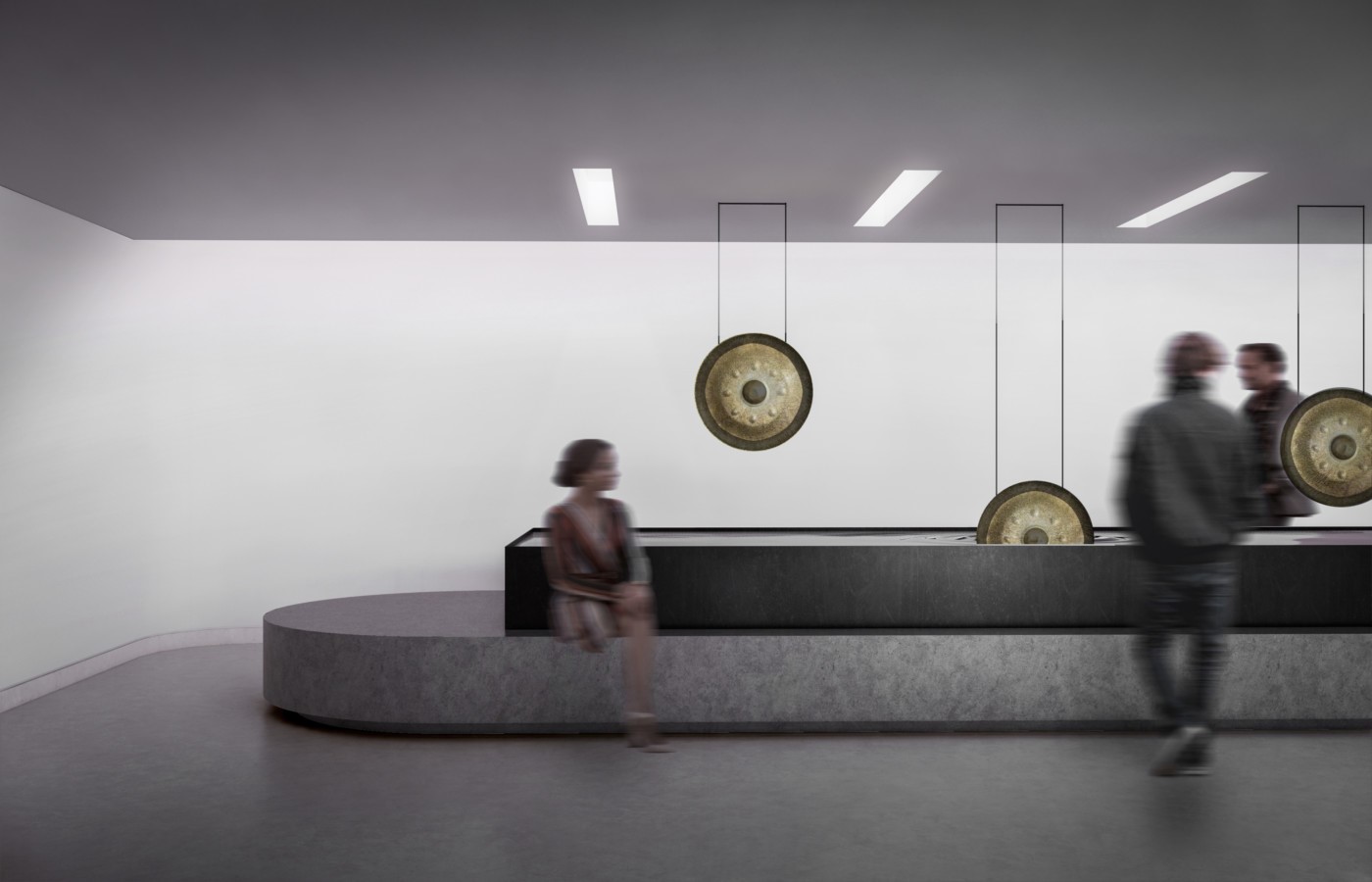
They have also designed a small amphitheater for both experiential and digital educational content, a wide digital screen with flexible seating for visitors, and a flexible space for lights-on learning with tables and chairs, modular, art-lab-like furniture.
“The Rubin has long fostered dialogue between art, contemplative practice, and contemporary science, but the Mandala Lab is an ambitious experiment.” Tim McHenry, the Chief Programmatic Officer of Rubin Museum said, “By developing a simulacrum of a tantric Buddhist teaching that anyone of virtually any age and cultural experience can take part in, we equally provide a platform for scientists to investigate the benefits that these practices can offer us in our world right now.”
The project is being done in perceived under the guidance of Dr. Lila Davachi, Professor of Psychology Columbia University; Dr. Stuart Firestein, Professor of Neurobiology Columbia University and Dr. John Dune; The University of Wisconsin-Madison Centre for Healthy Minds Professor of Contemplative Humanities along with the informative teachings by Dzogchen teachers Mingyur Rinpoche and Ponlop Rinpoche.
The Rubin museums third-floor galleries currently hosting the permanent exhibition of Himalayan Art will be restricted to the public from 10th November and will reopen on 21st January 2021 on the fifth floor. The new Mandala Lab will open for the public in fall 2021 as an interactive space for social and emotional learning for all ages.


